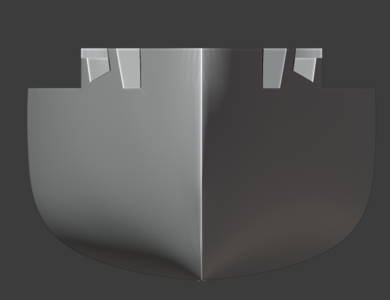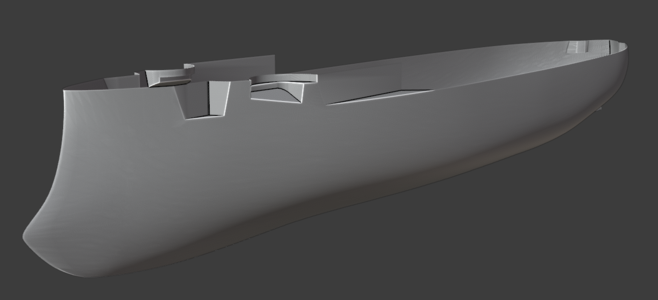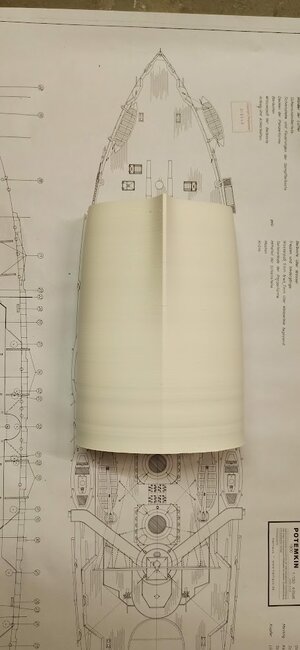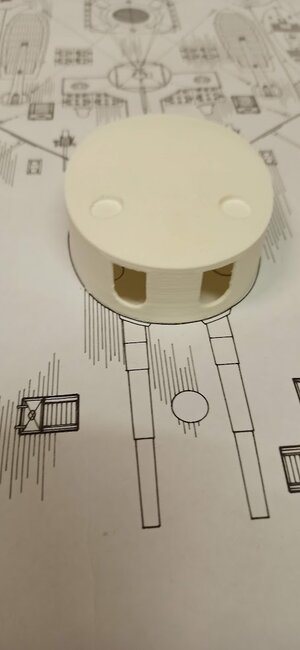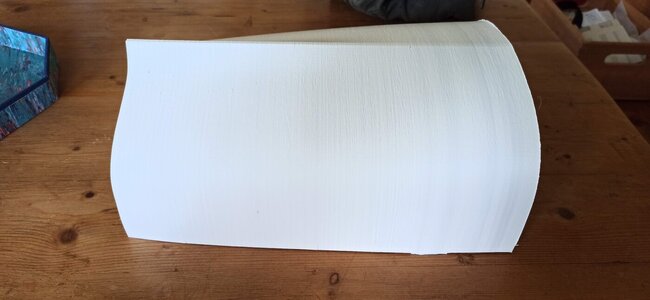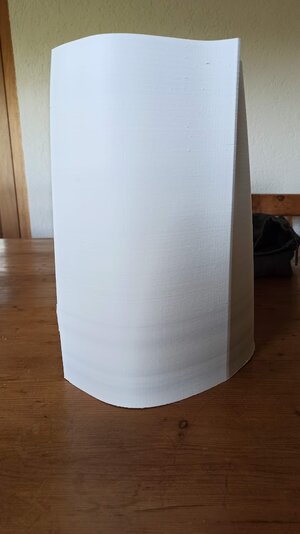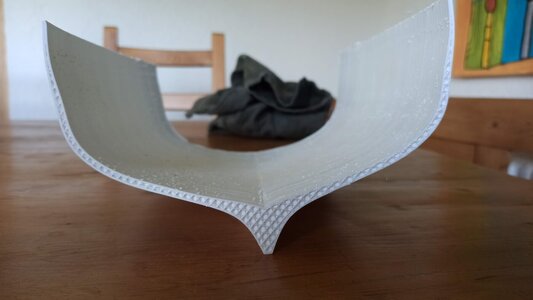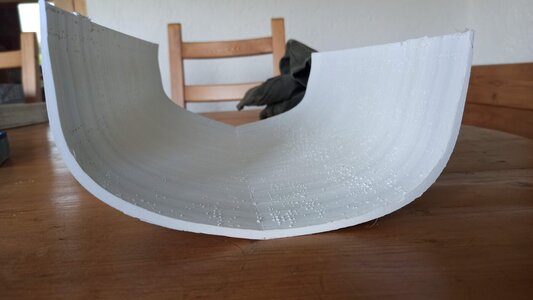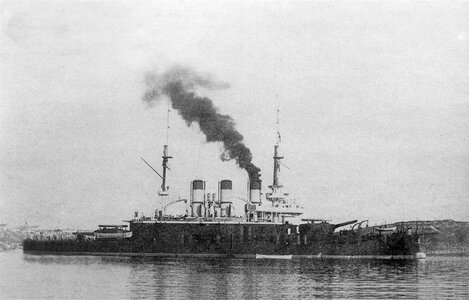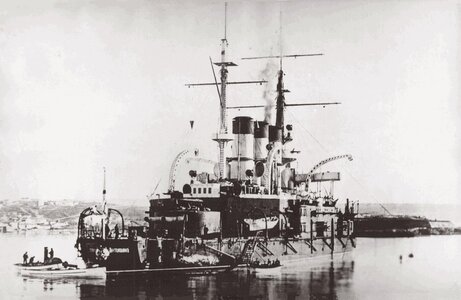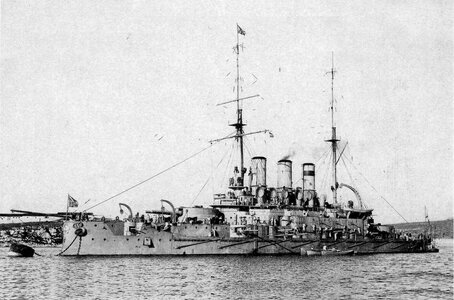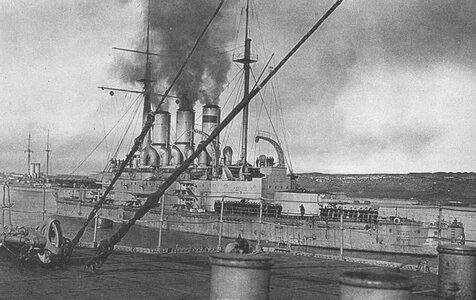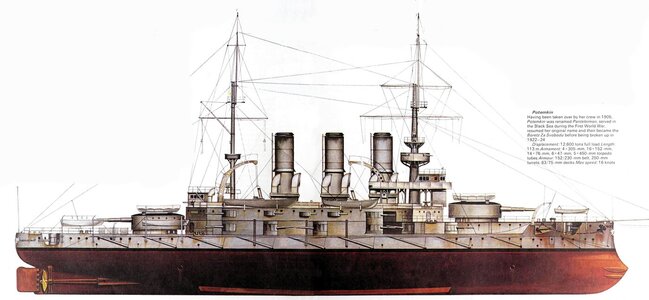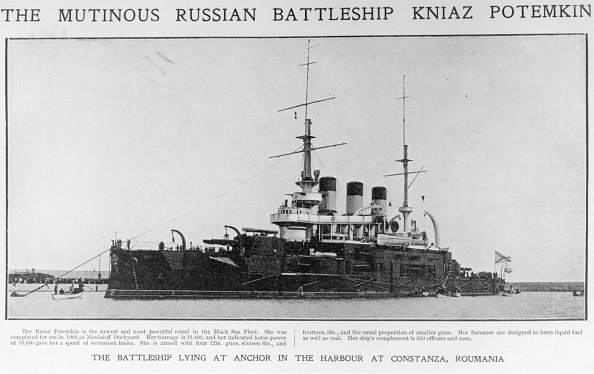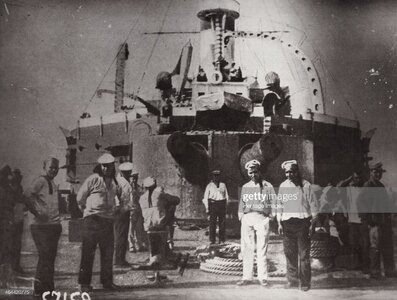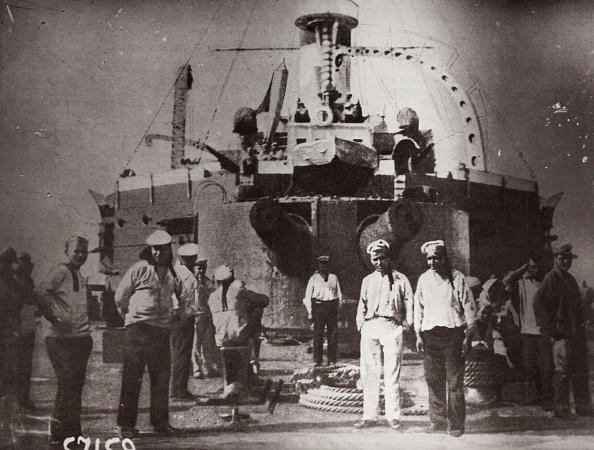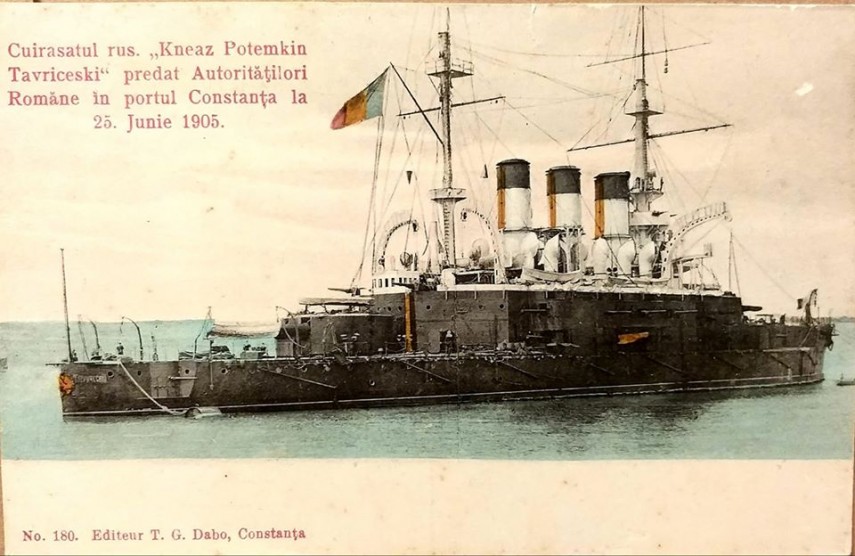Заложен 28 сентября 1898 года на стапеле Николаевского Адмиралтейства в городе Николаеве. Разработку проекта, а впоследствии и руководство строительством осуществлял корабельный инженер Севастопольского военного порта А. Э. Шотт.
Построен на прототипе эскадрильи линкора «Три святых», переработанном проекте линкоров типа «Пересвет», схема бронирования аналогична английскому линкору «Маджестик».
На линкоре впервые было применено централизованное управление артиллерийским огнем - с центрального поста, расположенного в боевой рубке. Он стал первым кораблем ВМФ России с котлами на жидком топливе.
26 сентября 1900 года был спущен на воду линкор «Князь Потемкин-Таврический», а 20 июня 1902 года он совершил переход в Севастополь - для доработки и вооружения. Первоначальный срок ввода в эксплуатацию был сорван из-за пожара, возникшего 20 декабря 1903 года в котельной и нанесшего серьезный ущерб. Расследование причин выявило ряд конструктивных и технологических недостатков котлов, которые потребовали их замены на твердотопливные котлы. При испытаниях артиллерии главного калибра в броне башен были обнаружены снаряды. Их тоже пришлось заменить на новые.
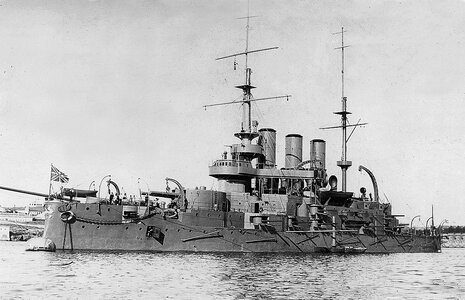
Водоизмещение расчетное 12 480 тонн, фактическое - 12 900 тонн. Длина корпуса 115,4 м, ширина 22,2 м, осадка 8,4 м. Электростанция состоит из трех групп паровых котлов (две из них - 14 котлов, работающих на жидком топливе и одна из 8 котлов - на угле), которые приводили в действие две вертикальные паровые машины тройного расширения общей мощностью 10 600 л.с. Скорость полного курса корабля - 16,7 узла. Карданные валы располагались симметрично и оснащались винтами диаметром 4,2 метра со скоростью вращения 82 об / мин. Полный запас топлива составляет 950 тонн, усиленный - 1100 тонн (на долю угля приходилось 340 тонн). Дальность плавания при экономичном курсе в 10 узлов составляет 3600 миль. Запасы судовой воды - 14 суток, запасы корма - 60 суток. Главный калибр - четыре 305-мм орудия со стволами длиной 40 калибров, установленных в двух башнях. Масса одной пушки - 43 тонны, скорострельность - 0,75 выстрела в минуту, начальная скорость снаряда - 792,5 м / с, масса снаряда - 331,7 кг. Угол вертикальной наводки был сделан больше, чем на линкорах «Балтика»: -5 ° ... + 35 ° [1]. Боекомплект одной пушки составлял: 18 бронебойных, 18 осколочно-фугасных, 4 сегментных, 18 чугунных, 2 картечных.
Средний калибр - шестнадцать 152-мм орудий с длиной ствола 45 калибров массой 5 тонн. Скорострельность - 4 выстрела в минуту, начальная скорость снаряда - 792 м / с. После восстания линкор был переименован в «Пантелеймон».
I am ready to search for the necessary information on Russian-language websites and forums.
google translation:
Laid down on September 28, 1898 on the stocks of the Nikolaev Admiralty in the city of Nikolaev. The development of the project, and subsequently the construction management was carried out by the ship engineer of the Sevastopol military port AE Shott. Built on the prototype squadron of the battleship Three Saints, a revised design of the Peresvet-class battleships, the booking scheme is similar to the British battleship Majestic. The battleship was the first to use centralized control of artillery fire - from a central post located in the conning tower. It became the first ship of the Russian Navy with liquid fuel boilers. On September 26, 1900, the battleship "Prince Potemkin-Tavrichesky" was launched, and on June 20, 1902, he made the transition to Sevastopol - for revision and armament. The initial commissioning date was disrupted due to a fire that broke out on December 20, 1903 in the boiler room and caused serious damage. Investigation of the reasons revealed a number of design and technological shortcomings of the boilers, which required their replacement with solid fuel boilers. During tests of the main caliber artillery shells were found in the turret armor. They also had to be replaced with new ones.
The calculated displacement is 12,480 tons, the actual displacement is 12,900 tons. The length of the hull is 115.4 m, the width is 22.2 m, the draft is 8.4 m. in operation two vertical triple expansion steam engines with a total capacity of 10 600 hp. The speed of the full course of the ship is 16.7 knots. The cardan shafts were located symmetrically and were equipped with screws with a diameter of 4.2 meters with a rotational speed of 82 rpm. The full fuel supply is 950 tons, the reinforced one is 1100 tons (the share of coal accounted for 340 tons). The cruising range on an economical course of 10 knots is 3600 miles. Marine water reserves - 14 days, feed reserves - 60 days. The main caliber consists of four 305-mm guns with 40-caliber barrels installed in two turrets. The mass of one gun is 43 tons, the rate of fire is 0.75 rounds per minute, the initial velocity of the projectile is 792.5 m / s, and the mass of the projectile is 331.7 kg. The elevation angle was made larger than on the battleships "Baltika": -5 ° ... + 35 ° [1]. Ammunition of one gun was: 18 armor-piercing, 18 high-explosive fragmentation, 4 segment, 18 cast iron, 2 buckshot.
Medium caliber - sixteen 152-mm guns with a barrel length of 45 calibers and weighing 5 tons. Rate of fire - 4 rounds per minute, muzzle velocity - 792 m / s. After the uprising, the battleship was renamed "Panteleimon".
I am ready to search for the necessary information on Russian-language websites and forums.

